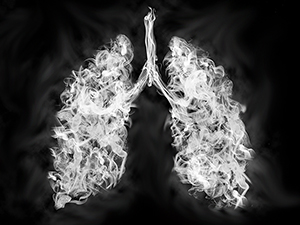Golisano Children's Hospital / News / Peer-Led Vaping Prevention
Multi-Year Grant to Study Peer-Led Vaping Prevention Program in Middle Schools
 June 2020
June 2020
A new $4 million, five-year grant will enable researchers at the University of Rochester Medical Center to study the effectiveness of peer-led efforts to prevent adolescent vaping in schools.
The project, funded by the National Institute on Drug Abuse (NIDA), will center on a program called “Above the Influence of Vaping” (ATI-V). Started in 2017, ATI-V engages eighth graders to create a school culture in which more students overcome pressures to abuse vaping. Key opinion leaders selected from diverse friendship groups go through training to learn what motivates them to rise above negative influences, in particular what they gain in life by not vaping, versus what they lose if they do. They also learn how peer norms drive behaviors and their role in shifting attitudes toward vaping resistance. After training, peer leaders lead prevention campaigns with adult mentors in their school and disseminate ATI-V to their friends. The prevention campaigns use science-validated strategies, which peer leaders adapt for their local school culture.
“Eighth grade is a fairly early stage of experimentation with vaping products, which makes that age an optimal window to engage key opinion leaders before attitudes normalizing vaping become widespread,” said Peter Wyman, Ph.D., professor of Psychiatry, lead investigator, and director of the School and Community-Based Prevention Program at URMC. “School districts are extremely receptive to students taking the lead and working with adults in the school to strengthen resistance around vaping use.”
Wyman and his colleagues saw early evidence of ATI-V’s effectiveness during a pilot project conducted during the 2018-19 school year. Working with eighth-grade peer networks in three schools, ATI-V identified and trained 50 peer leaders to disseminate vaping-prevention messages among friends. Twelve to 16 weeks afterward, students with more of these peer leader friends were less likely to report vaping.
ATI-V is based on a social network approach. Many new behaviors spread through peer friendship networks, with key opinion leaders playing an influential role by introducing new practices and encouraging others to adopt them. Research shows vaping prevention is well-suited to this approach because peer group attitudes are influential in adolescents’ decisions to try vaping products.
This new project will work with eighth and ninth graders at 20 schools across the Finger Lakes Region and Western New York, including a mix of urban and rural locations. The study will test if ATI-V reduces vaping behaviors by 10th grade by increasing students’ perceptions that vaping is unacceptable to peers and has social costs. The program will also examine if ATI-V bolsters connections to positive adults who support non-use decisions, and increases social influence of non-using students.
The project will also look to identify implementation barriers by comparing three schools that successfully implemented ATI-V with three that struggled to adopt it, in order to identify what implementation strategies would be needed above and beyond the current ATI-V. New York State agencies including Mental Health, Addiction Services and Supports, and Education will assist in disseminating what is learned through the project.
The comprehensive school-wide approach used by ATI-V is needed due to the increase of vaping among teen and young adult populations, and the demand from school communities to see more interventions that can be tailored to local needs, according to Wyman.
“Two years ago, vaping was taking off due to several factors, including new products that delivered high doses of nicotine. We were hearing from adults in the schools that there was a tremendous need to start prevention, as well as from older teens who wished they had resisted vaping before becoming dependent. And since there was no evidence base of research-informed programs, we adapted our peer-led Above the Influence – which started as an overall substance abuse program – and focused it on vaping prevention.”
Research shows that adolescent vaping has been spreading rapidly. The proportion of 10th- and 12th- grade students reporting regular nicotine vaping (16.1% and 21%, respectively) in 2018 was double the rate from 2017. Since 2018, rates of vaping have continued to rise. Evidence also exists that early nicotine exposure can act as a gateway to using other substances and may increase risk for addiction.
In order to identify peer leaders, this project will work with each school to send out an initial, anonymous survey of eighth graders to identify social groups and influential opinion leaders.
“We focus on opinion leadership for a fairly small group. For the eight or nine students that hang out together, one or two of those students are usually influencers. ATI-V aims to activate those influencers with the intent of long-lasting impact to prevent initiation of vaping within these peer friendship groups,” Wyman said.